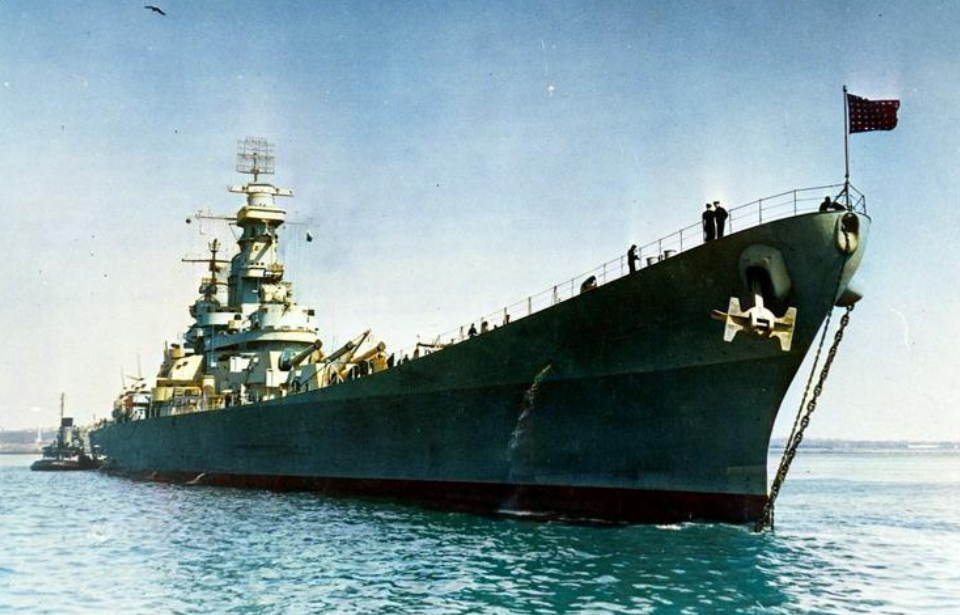The USS Iowa (BB-61) wasn’t just an elite battleship – she was also the leader of all Iowa-class vessels. Designed with speed in mind, her construction was ordered at the start of the Second World War to escort the Fast Carrier Task Force operating in the Pacific Theater. Iowa not only survived the conflict, but went on to witness the rapidly changing landscape of global conflict that continued well into the 1980s.
The USS Iowa and President Franklin D. Roosevelt
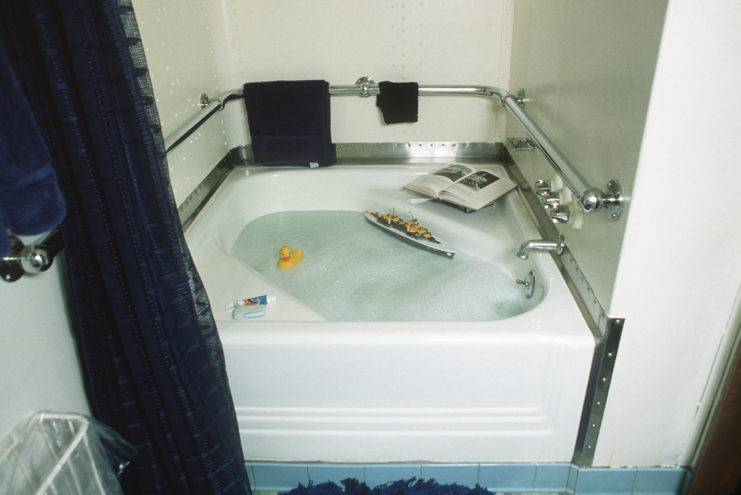
The USS Iowa was ordered in July 1939 and laid down at the New York Naval Shipyard the following year. She was commissioned on February 22, 1943, with Capt. John L. McCrea at the helm. McCrea was a naval aid for President Franklin D. Roosevelt, who was escorted to Morocco for the Casablanca Conference aboard the battleship. In anticipation of the trip, a custom bathtub was added to Roosevelt’s quarters.
Iowa returned to the United States on December 16, 1943, with Roosevelt saying of her crew, “From all I have seen and all I have heard, the Iowa is a ‘happy ship,’ and having served with the Navy for many years, I know – and you know – what that means.” He concluded his address with, “Good luck, and remember that I am with you in spirit, each and every one of you.”
The USS Iowa was a major asset in the Pacific Theater
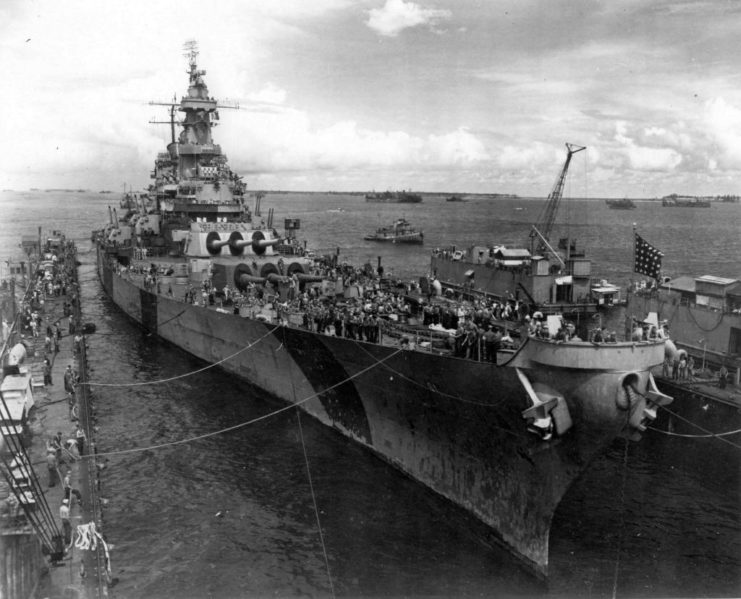
Upon her launch, the USS Iowa was among the most heavily-armed in the US Navy’s fleet. Her main battery featured nine 16-inch .50-caliber Mk 7 naval guns, while her second included 20 Mk 12 five-inch .38-caliber guns in twin mounts. To ensure she was protected against attacks from the air, the battleship was also fitted with Bofors 40 mm and Oerlikon 20 mm anti-aircraft guns.
Iowa departed for the Pacific in early January 1944 as the flagship of Battleship Division 7 (BatDiv 7). She was to participate in the Marshall Islands Campaign – her combat debut. Arriving on January 29, she supported carrier air strikes made by decorated Adm. Frederick C. Sherman’s Task Group 58.3 (TG 58.3).
While on another assignment aiding in strikes against the Japanese naval base at Truk, in the Caroline Islands, Iowa and her sister ship, the USS New Jersey (BB-62), sank the Japanese light cruiser Katori.
Over the next several months, the battleship provided support for assaults against locations throughout the Pacific during the Mariana and Palau Islands Campaign. Under the command of Adm. Chester Nimitz, the offensive was launched to destroy Japanese bases in the area and provide support for the forces struggling to retake the Philippines.
Iowa also played a large role in the Battle of the Philippine Sea on June 19, 1944, helping repel four massive air raids launched by the Imperial Japanese Navy (IJN). She destroyed three enemy aircraft, aiding in the near-complete destruction of carrier-based enemy air forces.
Bombardment of Japan
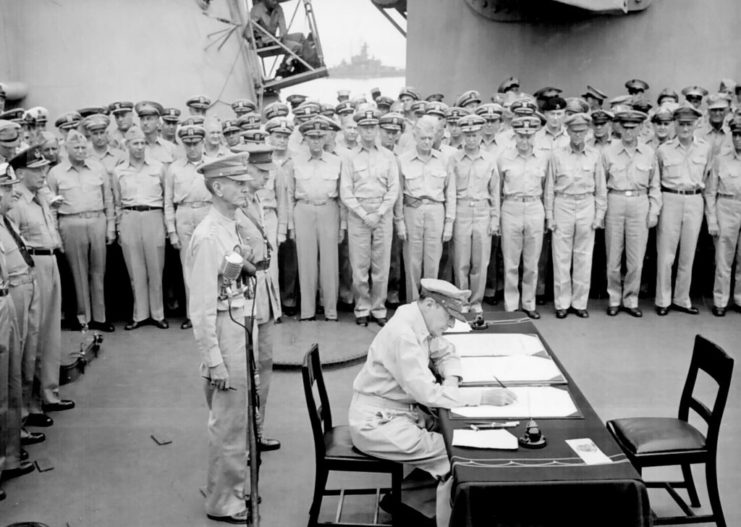
After several more engagements in the South Pacific, the USS Iowa traveled to Okinawa to relieve the USS New Jersey and support carrier operations in the area. This was one of many bombardment campaigns that took place throughout the Japanese islands as part of the American plan to occupy the country, in the hopes of surrender.
On August 29, Iowa and her sister ship, the USS Missouri (BB-63), entered Tokyo Bay, where a number of soldiers were temporarily transferred aboard her while the Japanese Instrument of Surrender was signed. She then aided in Operation Magic Carpet, receiving American soldiers and liberated prisoners of war (POWs), and returning them home.
Iowa briefly returned to Japan as the flagship of the US Fifth Fleet, before resuming her role as a training ship. She participated in Operation Crossroads, the atomic tests in Bikini Atoll, carrying out a live fire attack on the USS Nevada (BB-36).
Iowa was deactivated in 1949, before being reactivated in 1951, a year into the Korean War. She delivered heavy artillery aid throughout the conflict, and engaged in 43 gun strikes on targets in Wŏnsan, Sŏngjin, Kojo, Chaho, Toejo, Simpo, Hŭngnam and Inchon. The battleship fired over 16,600 rounds during these operations, making her eligible for the UN Service Medal and the Korean Service Medal with one bronze star.
40 years later, the USS Iowa remains top-of-the-line
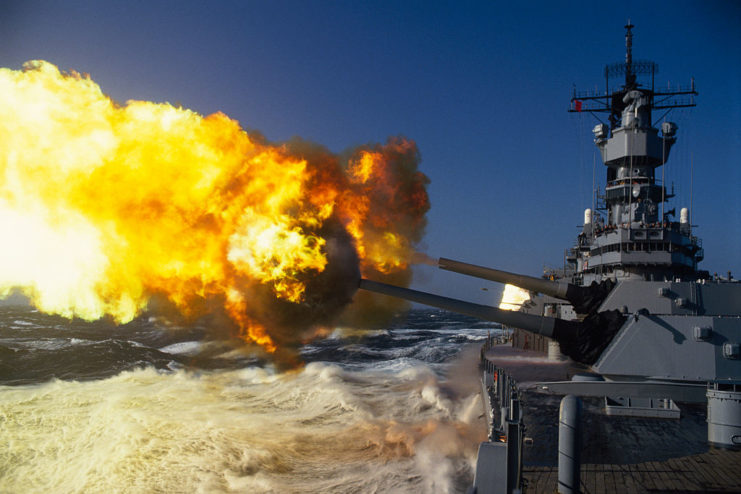
Following the Korean War, the USS Iowa participated in NATO exercises, before being decommissioned in 1958. Nearly 25 years later, she was reactivated and refitted as part of President Ronald Reagan‘s effort to create a 600-ship Navy. Her anti-aircraft guns were removed, as well as two five-inch gun mounts.
Iowa’s weapons were updated to the most advanced systems available at the time. Alongside upgraded radar and fire-control systems, four Mk 141 quad cell launchers with 16 AGM-84 Harpoon anti-ship missiles, eight Armored Box Launcher mounts with 32 BGM-109 Tomahawk missiles and four Phalanx Close-in weapon system Gatling guns were added. Iowa was also the first battleship to receive the RQ-2 Pioneer Unmanned Aerial Vehicle (UAV).
Throughout the early-to-mid-1980s, the vessel was used in training and NATO exercises, before being called to assist Kuwaiti ports and tankers as they navigated the precarious area around the Iran-Iraq border during the First Gulf War.
A mysterious explosion claims 47 lives
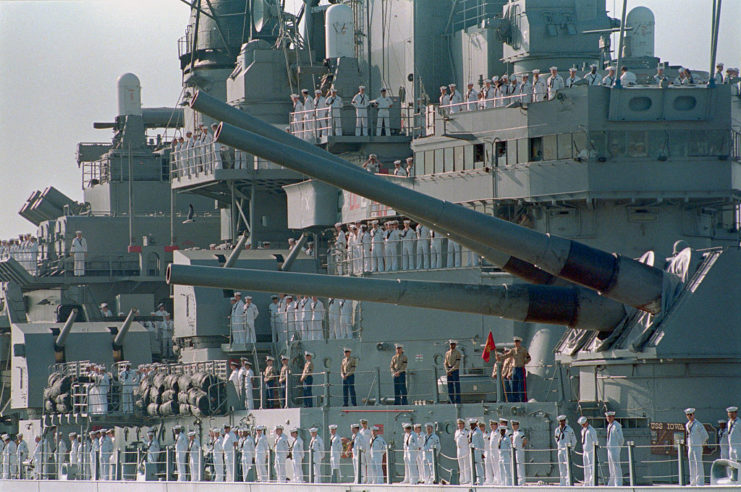
Tragically, during a gunnery exercise on April 19, 1989, an explosion rocked the USS Iowa, ripping through the Number Two 16-inch gun turret. Forty-seven crewmen were killed in the incident, which was originally believed to have been planned by a deceased crew member, Gunner’s Mate Second Class Clayton Hartwig. He was thought to have detonated an explosive device during an attempt to take his own life, following the end of an alleged affair with another sailor.
The presence of unexplained material found inside the turret and Hartwig’s alleged unstable mental state supported this theory. Under increasing criticism, the US Congress reopened the investigation in 1991 and found evidence pointing to an accidental powder explosion, instead of a deliberate attack.
More from us: Battleship Row: The Nine American Vessels Targeted During the Attack on Pearl Harbor
Iowa was decommissioned for the last time in 1990 and has since opened to the public as a museum ship, located at the Port of Los Angeles in San Pedro, Los Angeles.
